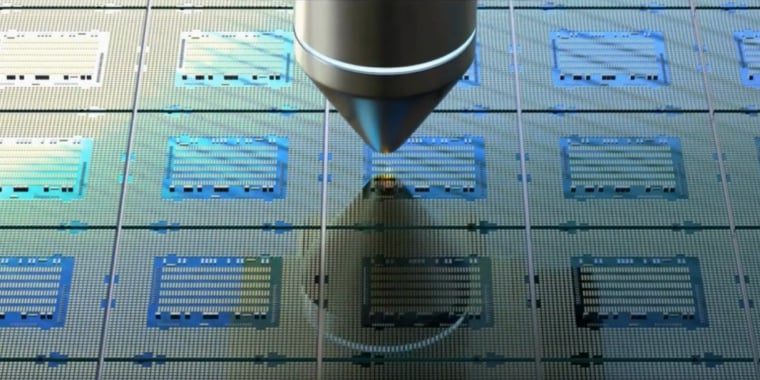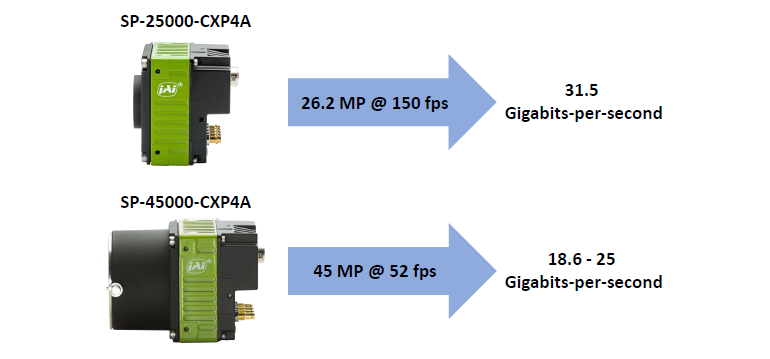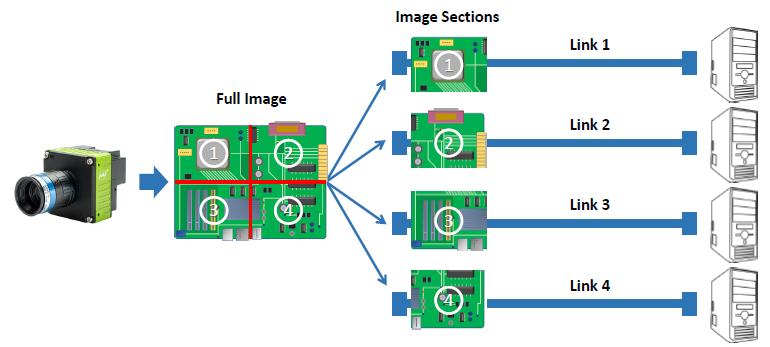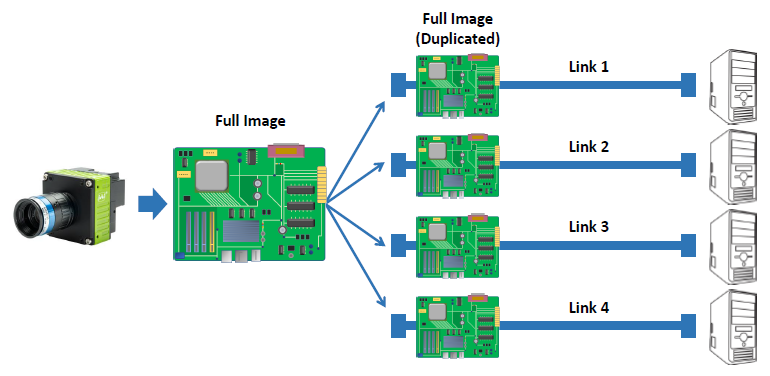
Some machine vision applications can benefit greatly from the availability of cameras offering both high resolution and high frame rates. These include automated optical inspection of printed circuit boards, inspection of flat panel displays, solder paste inspection (SPI), and some types of medical slide scanning, to name just a few.
Cameras like JAI’s Spark Series SP-25000-CXP4A, which provides 26-megapixel images at 150 frames per second, or the Spark SP-45000-CXP4A, providing 45-megapixel images at 52 frames per second, help designers of these types of systems to meet both their requirement to see small details over a large field of view, and the need to generate high levels of throughput from the production line.
But along with these considerable benefits comes a very large challenge: how to efficiently process the massive amount of data contained in this flow of high-speed, high resolution images?
A ‘big data’ challenge
Even using a compact, 8-bit data format, the 150 fps frame rate of JAI’s SP-25000-CXP4A generates nearly 31.5 gigabits per second of image data that needs to be analyzed by the inspection application. While the camera’s four-lane CoaXPress 2.0 interface provides a full 50 Gbps of capacity to easily handle this flow of data between the camera and the application, a single application processor can be quickly overwhelmed by the size of the processing task, slowing the identification of defects and thereby sacrificing the high throughput goal for which the camera was selected.
Meanwhile, JAI’s 45-megapixel SP-45000-CXP4A model can stream anywhere from 18.6 gigabits to 25 gigabits of image data per second, depending on the pixel format. Though slightly less than the SP-25000-CXP4A’s data rate, this flow of high resolution images is still a heavy load for typical application processing resources to accommodate.

Solving by sharing
Fortunately, both of these Spark Series cameras feature functionality that can be leveraged by system designers to meet the data challenge of high-speed, high resolution applications. Two strategies are available, both of which utilize a feature of the CoaXPress 2.0 standard called “link sharing.”
The first approach is simply called “Sharing Mode.” In this mode, each image coming from the camera can be automatically split into two halves or four quarters. Each of the sub-images is then sent over one of the four CoaXPress channels to a separate application processor. This means system designers don’t need to have one large “supercomputer” to keep their application running at top speed. Instead, they can utilize four smaller (and easier to configure) hosts to spread out the task and maintain the desired throughput.

Sharing Mode - 4 Quadrants
Depending on the application and the nature of the target object, the image can be split vertically, horizontally, or into four quadrants to focus each processor on a particular subset of the task. Users can also specify anywhere from zero to 128 lines/pixels of overlap between sections to ensure that defects along the boundaries aren’t missed.
 Additional Sharing Mode Options
Additional Sharing Mode Options
A second option for link sharing is called “Duplicate Mode.” In this mode, the full image is sent to two, three, or four different computers for processing. This is designed for applications where multiple analyses are being performed across the entire image. Rather than splitting the image into pieces, each processor is given the entire image but only needs to perform some of the required tasks. Thus, each computer can complete its tasks faster and can maintain the throughput of the overall application.
 Duplicate Mode
Duplicate Mode
It should be noted that the use of duplicate mode is intended for applications where the processing task is the clear bottleneck in the application. It assumes that the frame rate of the camera is being significantly limited due to the processing cycle.
Since each lane of the four-lane CoaXPress interface can only handle a maximum of 12.5 Gbps, sending the full image to four computers reduces the frame rate of the SP-45000-CXP4A in 8-bit mode by 33% and reduces the speed of the SP-25000-CXP4A by 60%. Even so, this can result in a faster application speed for some applications where the processing task is exceptionally complex.
The CoaXPress link sharing function in JAI’s SP-25000 and SP-45000 cameras gives vision system designers more options to conquer data issues and maintain high throughput in their high resolution applications. For additional information or to discuss a design project, please use our website Contact Form.
